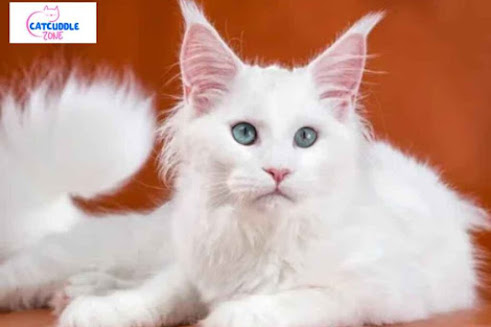How Do I Know If My Cat Is in Heat? Signs and Solutions - 10 Shocking Reasons
Cats may be mysterious creatures, but when they're in heat, the signs can be loud, persistent, and sometimes puzzling. If you're wondering whether your feline is in heat, you're not alone. Understanding the signs, reasons, and how to address them can help you and your cat stay calm, safe, and stress-free.
In this blog, we'll uncover 10 shocking reasons your cat may be in heat, how to recognize the symptoms, and what you can do about it.
What Does "In Heat" Mean in Cats?
When a cat is in heat (also called estrus), it means she is sexually mature and ready to mate. This typically begins as early as 4 to 6 months of age and continues in cycles every few weeks if she’s not spayed. Hormones surge, and behaviors change rapidly, often confusing new cat owners.
10 Shocking Signs Your Cat Is in Heat
1. Excessive Vocalization
Your sweet, quiet kitty may suddenly start yowling loudly. These cries are mating calls to attract male cats. The noise can continue day and night, often sounding distressed.
2. Restlessness and Pacing
If your cat seems like she can't sit still, pacing around the house or meowing near windows and doors, it’s a major clue. She's actively looking for a way to find a mate.
3. Excessive Affection
Suddenly clingy? Cats in heat often rub against furniture, people, and even the floor more than usual. They may roll around and purr excessively, craving attention.
4. Rear-End Elevation
If you stroke her back and she lifts her rear while treading her back legs, this mating position is a very clear indicator that she is in estrus.
5. Licking the Genital Area
You might notice your cat grooming her genital area more frequently. Swelling or slight discharge is also a possible sign.
6. Trying to Escape the House
Cats in heat become determined escape artists. They may scratch at windows, doors, or screen frames trying to find a mate outside.
7. Marking Territory
Female cats may start spraying urine, just like males, to signal availability to nearby tomcats. This urine has a particularly strong smell.
8. Loss of Appetite
Due to hormonal changes, a cat in heat may eat less or seem disinterested in food altogether.
9. Tail Positioning
Cats may hold their tail to the side when being petted or even randomly. This is a sexual signal indicating receptiveness to males.
10. Behavior Changes with Other Pets
Your cat might suddenly become aggressive or overly affectionate with other pets in the house. These mood swings are tied to hormonal fluctuations.
Why Is This Happening? Shocking but Natural Reasons
Cats are seasonally polyestrous, meaning they can go into heat multiple times during breeding season (spring and summer). Indoor cats, exposed to artificial light and warmth year-round, can experience year-round heat cycles.
Hormones like estrogen surge, triggering physical and behavioral changes. It's not only natural—it's hardwired for survival. However, it can be distressing for both the cat and the owner.
What Should You Do? Solutions That Work
1. Spaying
The most effective solution is to spay your cat. This not only eliminates heat cycles but also prevents unwanted litters and reduces the risk of certain cancers.
2. Keep Her Indoors
Avoid letting her out, especially during peak heat behavior. Male cats will flock to her, and she may get pregnant quickly.
3. Comfort and Calm
Provide a quiet, dark space for her to relax. Use a warm blanket, soft music, or pheromone sprays (like Feliway) to soothe anxiety.
4. Distraction Techniques
Play with her to tire her out. Puzzle toys, interactive games, or climbing structures can redirect her energy.
5. Consider Temporary Solutions
Speak to your vet about hormonal treatments, though these are not long-term solutions and may carry side effects.
When to See a Vet
If your cat seems to be in constant heat, is bleeding, or appears unwell, it's crucial to consult a veterinarian. Persistent symptoms may indicate underlying issues such as ovarian cysts or infections.Final Thoughts
Cats in heat can be overwhelming to care for, but understanding the signs and taking the right steps can ease the journey for both of you. If you're not planning to breed your cat, spaying is the best long-term solution.
For more helpful tips on feline care, visit us at Cat Cuddle Zone—your purrfect sanctuary for all things cat! 🐾




Comments
Post a Comment